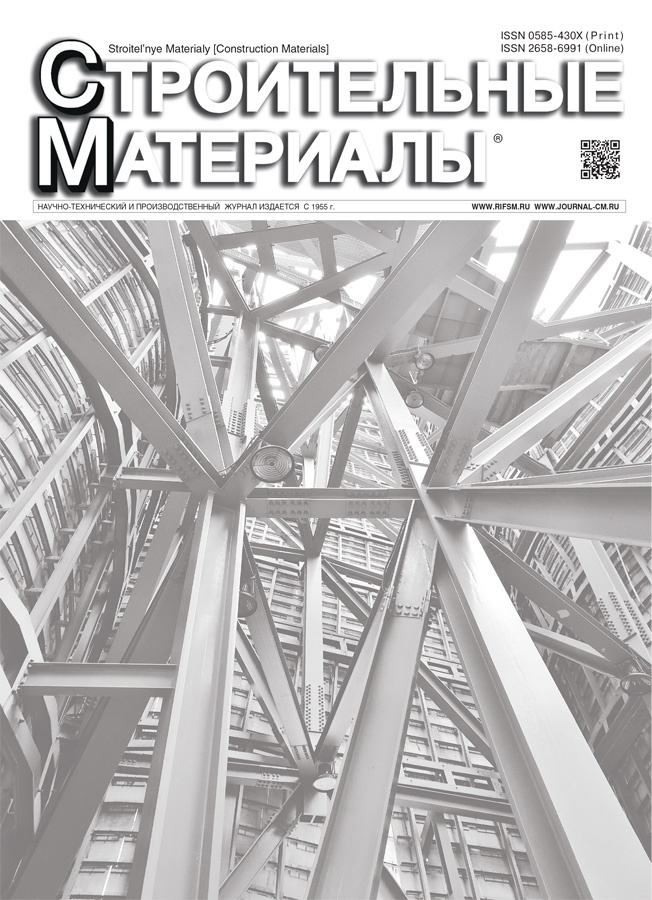Freezing-test methods for masonry products in Russia, the EU, the USA and Canada
- Authors: Ponomarev O.I.1, Bessonov I.V.2, Dozorova A.Y.1, Pavlova E.A.1
-
Affiliations:
- Research Institute of Building Construction named after V.A. Koucherenko (TSNIISK named after V.A. Koucherenko)
- Research Institute of Building Physics, Russian Academy of Architecture and Construction Sciences
- Issue: No 9 (2025)
- Pages: 9-14
- Section: Статьи
- URL: https://archivog.com/0585-430X/article/view/693081
- DOI: https://doi.org/10.31659/0585-430X-2025-839-9-9-14
- ID: 693081
Cite item
Abstract
The article analyzes the methods of testing for frost resistance of brick, stone, block in Russia, European countries, as well as in the USA and Canada. It is noted that in Russia and in European countries there is an incorrect assessment of the frost resistance of masonry wall products tested by the method of volumetric freezing and the method of unilateral freezing. The article also states that in the USA and Canada, a different method is used to determine the frost resistance of masonry products. The main purpose of the article is to point out to consumers: designers, builders, individual developers, the need to take into account the methods of determining their frost resistance when using masonry products. It is also necessary to review the frost resistance control of ceramic and silicate masonry products, as well as to amend the joint venture for the design of stone and reinforced stone structures in terms of designating the frost resistance of various types of masonry products. As an example, a table from the joint venture on the design of reinforced concrete structures is given, in which various designations are indicated for different types of concrete, which correspond to different test methods.
Full Text
About the authors
O. I. Ponomarev
Research Institute of Building Construction named after V.A. Koucherenko (TSNIISK named after V.A. Koucherenko)
Email: 1701088@mail.ru
Candidate of Sciences (Engineering)
Russian Federation, 6, 2nd Institutskaya Street, 109428, MoscowI. V. Bessonov
Research Institute of Building Physics, Russian Academy of Architecture and Construction Sciences
Email: bessonoviv@mail.ru
Candidate of Sciences (Engineering)
Russian Federation, 21, Lokomotivny Driveway, Moscow, 127238A. Y. Dozorova
Research Institute of Building Construction named after V.A. Koucherenko (TSNIISK named after V.A. Koucherenko)
Email: alexderges@yandex.ru
Engineer
Russian Federation, 6, 2nd Institutskaya Street, 109428, MoscowE. A. Pavlova
Research Institute of Building Construction named after V.A. Koucherenko (TSNIISK named after V.A. Koucherenko)
Author for correspondence.
Email: lp2807@mail.ru
Engineer
Russian Federation, 6, 2nd Institutskaya Street, 109428, MoscowReferences
- Bessonov I.V., Zaharov V.A., Pavlova E.A., Gorbunova E.A., Govryakov I.S. Determination of frost resistanceof building materials by the method of one-sided freezing. Zhilishchnoe Stroitel’stvo [Housing Construction]. 2023. No. 10, pp. 77–82. (In Russian). EDN: ONBRSK. https://doi.org/10.31659/0044-4472-2023-10-77-82
- Meleshko V.Yu., Chigrinova Zh.P. Comparison of methods for testing ceramic wall materials for frost resistance: conclusions and proposals. Stroitel’nye Materialy [Construction Materials]. 2013. No. 8, pp. 10–11. (In Russian). EDN: RAWVWH
- Ponomarev O.I., Bessonov I.V., Dozorova A.Yu., Pavlova E.A. Assessment of frost resistance of masonry wall products taking into account the moisture saturation method in Russian norms and standards. Stroitel’naya mekhanika i raschet sooruzheniy. 2023. No. 6 (311), pp. 81–86. (In Russian). EDN: LGCKJR. https://doi.org/10.37538/0039-2383.2023.6.81.86
- Hongfa Yu, Haoxia Ma, Kun Yan. An equation for determining freeze-thaw fatigue damage in concrete and a model for predicting the service life. Construction and Building Materials. 2017. Vol. 137, pp. 104–116. https://doi.org/10.1016/j.conbuildmat.2017.01.042
- Xiong Long, Yan Tan, Xiangmiao Wan, Lijun Zhou, Cheng Wang. Effect of freeze-thaw cycles and chloride salt erosion coupling conditions on fatigue properties of PE-ECC. Case Studies in Construction Materials. 2024. Vol. 20. e02726. https://doi.org/10.1016/j.cscm.2023.e02726
- McBurney J.W., Eberle A. R. Strength, water absorption, and resistance to freezing and thawing of sand-lime brick. Journal of Research of the National Bureau of Standards. 1938. Vol. 20, pp. 67–76.
- Ghafoori N., Smith D.R. Comparison of astm and canadian freeze-thaw durability tests. The Fifth Interantional Conference on Concrete Block Paving. Tel-Aviv, Israel. 1996, pp. 93–101. http://www.sept.org/techpapers/682.pdf
- Brosnan A. Testing and freeze-thaw durability prediction for clay bricks. International Journal of Engineering Research & Technology (IJERT). 2014. Vol. 3. Iss. 7, pp. 1270–1275. https://www.ijert.org/research/testing-and-freeze-thaw-durability-prediction-for-clay-bricks-IJERTV3IS070791.pdf
Supplementary files











